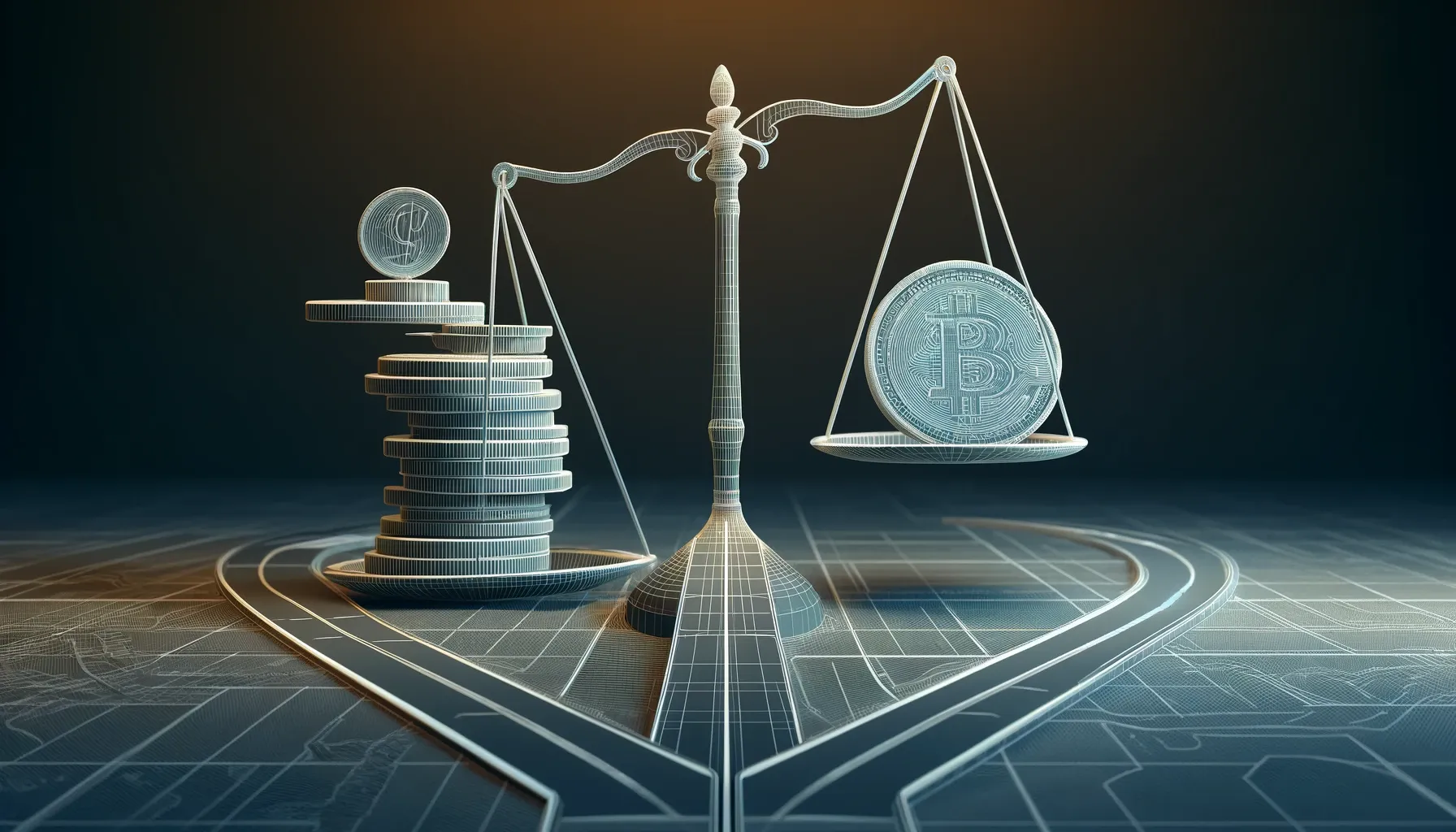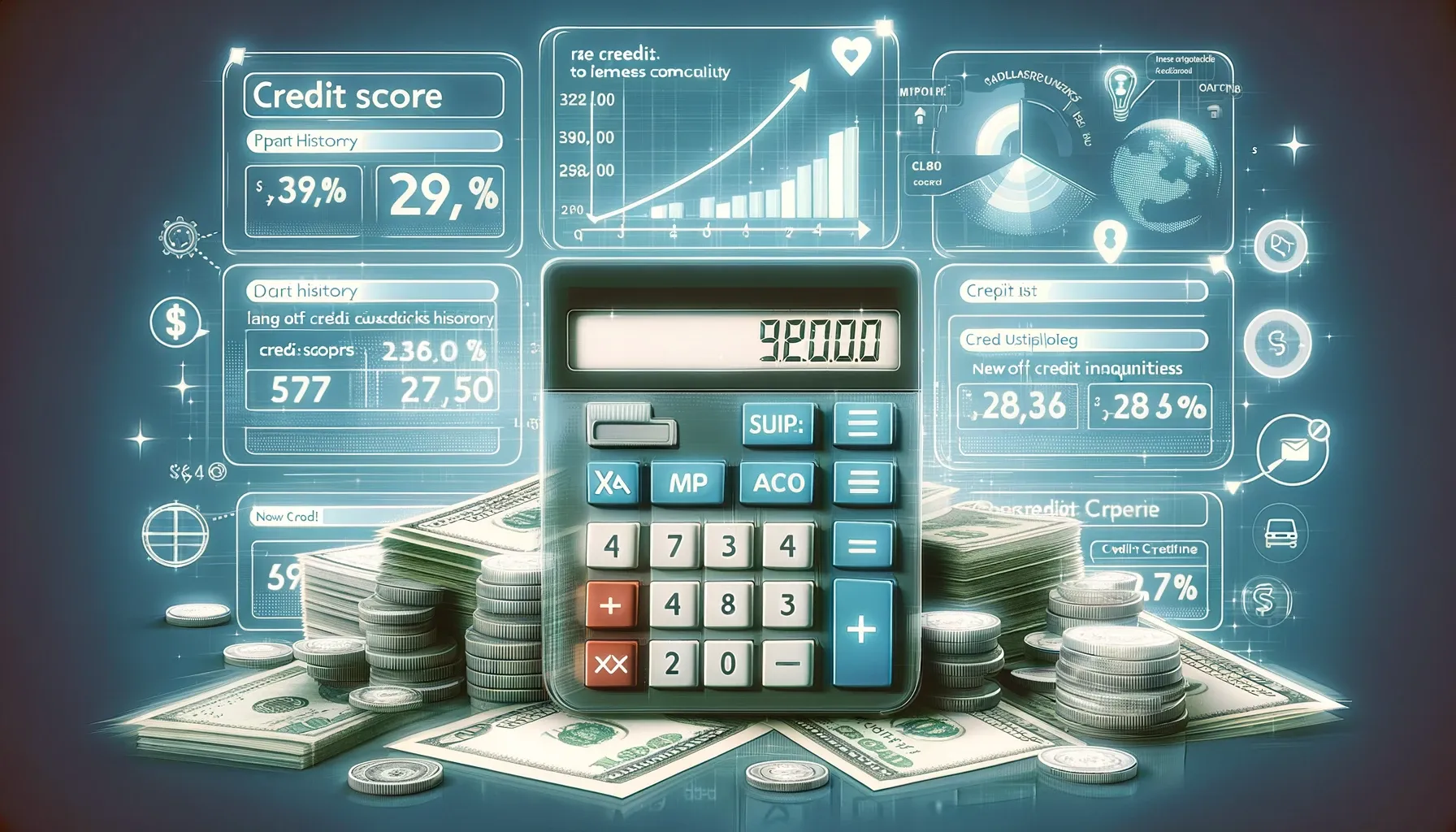Boost Your Credit Score in 30 Days: Action Plan for Days 15-21

Can You Really Boost Your Credit Score in 30 Days?
Yes! In this article, you will learn how to improve your credit score in just 30 days. And it's easier than most people think it is!
But first, let's talk about the scale of what we can achieve. It's not uncommon for people to increase their credit score by up to 100 points in just 30 days. Yes, you read that right!
Implement the action steps in this article and you can experience a rapid transformation in your credit health and better your credit score.
Even if you only boost credit score 30 points in 30 days that would be a significant achievement, proving your ability to make progress and worth celebrating.
Since most credit scores are updated every 30 days, changes you make today could boost your credit report within the next month. So, every action you take in the over the next seven days will bring you closer to your goal.
Let's delve into Week 3 of our 30-day plan to boost your credit score quickly! In this article, we're dedicated to unveiling the secrets of boosting your credit score quickly!
With just 15 days left in our 30-day plan, it's time to step up your game and see significant progress in raising your credit score. In this crucial week, we will focus on some powerful strategies that can have a profound impact on your credit rating.
Day 15: Maximize the Benefits of a Secured Credit Card
Fact: Did you know using credit cards strategically can accelerate getting out of debt and improve your credit score?
A secured credit card could be the answer to building your credit score. Unlike traditional cards, secured cards require an initial cash deposit, serving as collateral for your credit limit. This makes them ideal for anyone with limited credit history or past credit challenges.
4 Benefits of a Secured Credit Card
1. Establishes a Positive Credit History
The responsible usage of secured credit cards can help you establish a positive credit history. To make the most of yours, focus on diligent revolving account management. Pay your balance in full and on time each month to demonstrate your creditworthiness to potential lenders and avoid interest charges.
2. Elevates Your Credit Score
Using a secured credit card wisely can elevate your credit score. Consistently making on-time payments and maintaining low credit utilization, you signal responsible credit usage. Aim to keep your credit utilization ratio below 30% for optimal impact on your credit score.
3. Builds or Repairs Your Credit
Secured credit cards are invaluable for building or repairing credit. You can lay a solid foundation for your financial future through responsible use and effective management. Remember, responsible credit usage is paramount—prioritize timely payments and low credit utilization below 30% of your available credit limit or maximum impact on your credit score.
4. Easy to Acquire
A secured credit card can be a game-changer for those with limited or poor credit. It offers a pathway to building credit responsibly and gradually improving your credit score. Secured credit cards require a cash deposit as collateral for the credit limit. This deposit reduces the risk for the issuer.
I have often recommended that people trying to build or repair their credit use secured credit cards. They're a great tool for those who need them, but there a few things you should consider before acquiring one.
Secured cards require a cash deposit and for some, that could be a roadblock. But since they do require a cash deposit as collateral, they present a lower risk to the financial institutions while providing credit-building opportunities to the cardholder.
7 Must-Know Factors Before Getting a Secured Credit Card
When you consider these seven factors, you'll be better equipped to make informed decisions on how to effectively use secured credit cards to strengthen your financial profile and pave the way for more financial opportunities.
The seven must-know factors present some advantages and important considerations of secured credit card usage. Let's explore them:
1. Opportunity for Credit Building
Secure credit cards are ideal for those with minimal or no credit history, offering a stepping stone to financial improvement.
2. Safe Credit Establishment
Secure credit cards allow you to safely build your credit without the risk of accumulating debt.
3. Display of Financial Responsibility
Using these secured credit cards demonstrates to lenders your capability to manage credit well. So, make your payments on time.
4. Cash Deposit Requirement
If you obtain a secured credit card, you'll be using only the cash you deposit. So, you won't accumulate debt. But remember, your goal is to boost your credit score and while in the short-term it might cost a little more, the long-term benefits will include significant savings on major investments such as homes and purchases like cars.
5. Potential for Higher Costs
Secured cards might charger higher fees and interest rates compared to unsecured cards.
6. Credit Limit Considerations
Secured credit cards typically offer a lower credit limit, often tied to the deposit amount you placed in your account.
7. Temporary
Secured cards are a temporary not a permanent solution when looking for ways to boost your credit score. Once you've established a positive credit history, you'll be able explore other credit options for better terms and benefits.
In summary, secured credit cards are a helpful tool for those with limited credit history. They can help you safely build credit, because they require you to make a cash deposit as collateral to fund your card's spending limit. Although they might charge higher fees and interest rates, and offer lower credit limits than unsecured cards, responsible use will showcase your creditworthiness to lenders, effectively enhancing your financial health.
Day 16: Understand the Impact of Credit Utilization on Your Credit Score
What is Credit Utilization?
Credit utilization, a key component in the calculation of credit scores, represents the ratio of an individual's current outstanding credit card balances to their total available credit limits, expressed as a percentage.
This metric is crucial for lenders and credit scoring models, as it helps gauge how responsibly an individual manages their available credit. High credit utilization can suggest potential overreliance on credit, possibly indicating financial distress or higher credit risk, while low utilization rates are viewed favorably, reflecting prudent credit management and financial stability.
- Credit utilization reflects your reliance on debt and whether you're funding your lifestyle through financing.
Why Is a Low Credit Utilization Ratio Important?
Maintaining a low credit utilization ratio is crucial for a healthy credit score. Lenders view this ratio as a key indicator of responsible credit management. It profoundly affects both your financial health and credit score. Lenders consider a low credit utilization ratio a strong sign of responsible credit usage, which can lead to a better credit score.
- A low credit utilization ratio is necessary for a strong credit score.
How Is Your Credit Utilization Ratio Calculated?
Credit utilization is the ratio of your current credit card balances to your total available credit limits, expressed as a percentage. The ratio compare how credit card debt you have to much you have credit card availability.
To calculate your credit utilization ratio, divide your outstanding credit card balances by your total credit card limits. This calculation yields a percentage that reflects your credit usage.
- Outstanding credit card balances divided by your total credit card availability equals your credit utilization ratio.
How Low Should Your Credit Utilization Be?
How low should your ratio be? As low as you can get it since a lower percentage is preferable. And it goes lower as you pay off credit card debt. Maintaining a credit utilization ratio under 30% is essential for a healthy credit score. High credit utilization can signal to lenders that you're a high-risk borrower, potentially lowering your credit score. Conversely, a lower ratio indicates sound financial management, boosting your creditworthiness.
- Thirty percent (30%) or lower is ideal for your credit utilization ratio.
What are the Key Strategies for Managing Your Credit Utilization?
Regularly monitoring your credit card balances and keeping your spending in check can help maintain a low ratio. These practices not only aid in managing your finances better but keep you out of debt and make you more appealing to lenders.
- Monitor your credit card balances.
- Keep your credit card spending low.
What is the Primary Benefit of Retaining Older Credit Cards?
Keeping older credit cards open can positively affect your credit history. It lengthens your credit history and can improve your credit utilization ratio—both key components of your credit score. This strategy demonstrates to lenders your long-term reliability as a borrower.
- Keeping older credit cards open can improve credit history and utilization.
Remember, a secured credit card is more than just a financial tool—it's a stepping stone towards a healthier credit score and a brighter financial future. With responsible use, like timely payments and keeping your credit utilization low, you position yourself as a financially responsible individual in the eyes of lenders, paving the way for a more secure financial future.
1. A low credit utilization ratio is necessary for a strong credit score.
2. Outstanding credit card balances divided by your total credit card availability equals your credit utilization ratio.
3. Thirty percent (30%) or lower is ideal for your credit utilization ratio.
4. Monitor your credit card balances.
5. Keep your credit card spending low.
6. Keeping older credit cards open can improve credit history and utilization.
Day 17: Maximizing the Value of Your Older Credit Cards

Every action has its reaction—especially when it comes to your credit cards. Let's dive into why holding onto your older credit cards might be one of the smartest moves for your credit score.
How Can You Extend Your Credit History?
Keeping your older credit cards open can significantly benefit your credit score by maintaining a long credit history and lowering your credit utilization ratio. A lengthy credit history demonstrates your long-term financial dependability to lenders, emphasizing your adeptness at managing credit.
What is the Value of a Lengthy Credit History?
Your credit history's length is crucial for your credit score. By not closing old credit cards, you support a more extended credit history, enhancing your creditworthiness. This is because lenders value the ability to manage credit over time, seeing it as a sign of financial stability and reliability.
- Learn to appreciate your older credit card accounts.
Do Old Cards Lower Your Credit Utilization?
Yes! Older credit cards, especially if paid down or paid off, improve (lower) your credit utilization, which is the ratio of your used credit to available credit and is another critical factor in your credit score. (See Day 16.)
No! If the older credit card account carries a high outstanding balance, the debt load undermines your efforts to lower your credit utilization and display that your are financially responsibility. Further, closing the credit card can shorten your credit history and might increase (worsen) your overall credit utilization ratio, negatively affecting your credit score.
Active old credit cards increase your total available credit, helping to keep your credit utilization ratio low. A lower ratio is preferred by lenders, because it indicates responsible credit management, which ultimately boosts your credit score.
- Keep your existing credit card accounts open (and paid down).
How can You Boost Your Credit Score with Credit Card Management?
To optimize your credit score, closely monitor your credit card balances and prioritize swift debt repayment. This approach is crucial for maintaining a low credit utilization ratio—a fundamental element in elevating your credit score.
- Monitor your debt.
- Pay off debt quickly.
How Do Multiple Credit Cards Impact Credit Score?
Diversifying your spending across several credit cards can significantly aid in managing your credit usage more effectively. This strategy not only lowers your overall credit utilization ratio but also bolsters your creditworthiness.
- Spread credit card spending over multiple cards to lower credit utilization per card. However, the effectiveness of this approach might vary depending on the lender's credit scoring model.
- Understand the lender's policies.
Overall vs. Individual Card Utilization
Some credit scoring models focus more on the total utilization rate across all your cards, while others may also consider the utilization rate on each card. High utilization on a single card could potentially harm your score, even if your overall utilization is low. Conversely, evenly spreading out your debt across multiple cards can help keep both your overall and per-card utilization ratios down.
- If you're unsure of the lender's policy, look it up or ask.
Why Pay More Than the Minimum on Credit Bills?
Pay more than the minimum due on your credit card bills. This not only reduces your overall debt faster but also saves you interest and decreases your credit utilization ratio.
- Pay more than the minimum payment.
Why Pay Credit Bills Multiple Times a Month?
Paying your credit card bills multiple times within a billing cycle helps keep your balances minimal, thereby lowering your credit utilization ratio and enhancing your credit profile.
- Pay bills multiple times a cycle.
Why Request a Credit Limit Increase?
Consider requesting a credit limit increase on your existing credit cards. A higher credit limit, when not accompanied by increased spending, can significantly lower your credit utilization ratio, making you more appealing to lenders, especially if you maintain low spending levels.
- Request a credit limit increase.
Why Use Budgeting Tools to Plan?
Incorporating budgeting tools and financial planning into your everyday life is essential. This integration helps curb unnecessary spending, ensuring that your credit utilization ratio remains below the recommended 30% threshold.
- Use budgeting tools to plan your finances.
In Summary: Why Keep Old Credit Cards Active?
We've given several reasons why you should maintain your existing accounts. Review and apply them, because choosing to keep your older credit cards open and active lengthens your credit history and reduces your credit utilization ratio—two factors that positively influence your credit score.
- Keep your existing credit card accounts open (and paid down).
- Monitor your debt.
- Pay off debt quickly.
- Understand the lender's policies.
- Pay more than the minimum payment.
- Pay bills multiple times a cycle.
- Request a credit limit increase.
- Use budgeting tools to plan your finances.
Sources
How Credit Card Utilization Affects Credit Scores | Credit Karma, www.creditkarma.com
Day 18: Diversifying Your Credit Mix
Ready to elevate your financial health and unlock new opportunities? Then diversify your credit mix. Strengthening your credit portfolio through varied credit types can significantly boost your financial health. Today, explore ways to strengthen your credit portfolio and take proactive steps toward personal financial growth and resilience.
What is a Credit Mix?
Credit mix describes the variety of accounts listed on your credit report and influences 10% of your FICO score. This mix can include both revolving and installment loans, such as credit cards, student loans, auto loans, and mortgages. If you have a limited credit history, the diversity of your credit mix may have a more significant effect on your credit score.
I compare a diverse mix of credit types to sailing with various types of sails for different winds. Like a skilled sailor adjusts sails to navigate the sea, managing diverse credit steers you toward favorable borrowing terms and a robust credit score, setting the course for financial resilience. Each credit type is like a unique sail that captures the winds of financial opportunities, guiding you toward a secure financial future.
Why Diversify Your Credit Mix?
Credit diversification showcases your ability to handle different financial responsibilities. Demonstrating proficiency in managing various credit types highlights your financial responsibility to lenders and makes you a more appealing applicant.
Why Does Your Credit Mix Matter?
Boosts Your Credit Score
A diverse credit mix (credit cards, loans, mortgages) contributes positively to your credit score, as credit scoring models favor diversity in credit handling. Lenders prefer borrowers who show they can manage multiple types of credit responsibly.
Demonstrates Credit Management Skills
Managing different types of credit successfully showcases your financial responsibility and versatility to lenders, proving you can handle various forms of debt.
Get Better Loan Terms and Interest Rates
A diverse credit history can make you more attractive to lenders, potentially resulting in more favorable loan terms, lower interest rates, and higher borrowing limits. This strategic financial planning demonstrates to potential lenders that you're a low-risk borrower who is capable of managing your finances effectively.
Resilience to Financial Fluctuations
Diversification can provide flexibility, allowing you to adapt more easily to financial changes or challenges in today’s unpredictable world by accessing different types of credit to adapt to changing situations over time. This skill involves bouncing back from financial setbacks quicker, ensuring both short-term stability and long-term success. Financial resilience comes through disciplined and proactive management and prepares you to weather financial storms, moving beyond mere survival to thriving.
Accelerates Debt Reduction
Accelerated debt reduction strategies, including shifting balances from high to low-interest accounts, optimizing payments towards the principal, and enhancing debt elimination efficiency. Access to diverse credit products will enable you to make transfer balances lower interest rate credit cards and consolidate any other debt at lower interest rates, facilitating quicker debt payoff and cost savings.
What Can You Diversify Your Credit Mix?
Diverse credit types can open doors to financial opportunities, such as investing in property through mortgages or expanding a business with loans, contributing to personal and financial growth. Here are several ways to get started.
Leverage Credit Diversity
Use various credit types to prove financial reliability lenders and unlock financing opportunities for major personal and financial projects.
Be Financially Diligent
Prioritize timely bill payments and credit report reviews. Organize your personal finances to make it easier to pay your bills, improve financial awareness, avoid late payments, and prevent late fees.
Add Additional Streams of Income
Encouraging the pursuit of additional income, such as through investments or side hustles, strengthens your financial footing, making you more resilient to setbacks.
Balance Your Financial Management
A strong credit mix calls for a balanced approach between managing your current financial situation and seeking new growth opportunities, especially opportunities that could help you navigate unexpected financial challenges.
Implement and Adhere to Your Financial Strategy
Integrate proactive financial planning with consistent, disciplined practices and forward-thinking growth strategies to achieve lasting financial health and well-being.
Demonstrate Stability with Credit Diversity.
Successfully managing a diverse set of credit types over time can demonstrate your long-term financial stability and reliability, an important factor for large future financial endeavors like home purchases.
Next Steps
What's your next step in diversifying your credit mix? I recommend you follow the following steps.
1. Catalog Your Existing Credit
Start by itemizing your current credit types. Commonly, these include revolving debt like credit cards, and installment loans such as personal, auto, student loans, and mortgages for purchasing or refinancing properties.
2. Identify Gaps in Your Credit Portfolio
Determine which credit types are absent from your mix. Recognizing these gaps is essential for targeted diversification.
3. Explore Potential New Credit Types
Investigate various credit options that could fill the identified gaps. This could mean looking into additional loans or new credit card offers.
4. Select a Suitable Credit Option
After thorough research, pick a type of credit that best suits your diversification goals.
5. Weigh Pros and Cons
Delve into the benefits and potential drawbacks of the chosen credit type. This step ensures you're fully informed about your decision.
6. Apply Prudence Before Committing
Decide to acquire new credit only when it's truly needed, desired, and financially manageable. I have always adopted this cautious approach because it prevents overextension and maintains financial health.
Sources
Credit Mix: What It Is, How It Works, Examples, www.investopedia.com
Day 19: Plan to Tackle Bad Debt
My Personal Experience
Years ago, while in school, I made the mistake of applying for a credit card. As expected, I struggled to cover my expenses, let alone make the credit card payments. Despite knowing better, the allure of easy spending on the credit card proved tempting.
Eventually, I became unable to make the monthly payments, resulting in the accumulation of bad debt. Consequently, everything I'm teaching you here, I've been through firsthand.
As a borrower, I empathize with the anxious feeling of hearing my phone ring and wondering, "Is it a debt collector?" I never imagined I would find myself in such a situation, but the ups and downs of life can affect anyone. If you can relate to my story, don't be too hard on yourself.
As a finance graduate and former banker, I understand the bank's side (though I was never a debt collector but worked in corporate doing analysis). So, I understand both sides of this situation.
Let's proactively build an achievable plan to tackle this issue and move forward positively, whether it directly impacts you or not. Understanding this process, even on a basic level, is valuable.
Bad debts, known by many names, are accounts left unpaid for an extended period. Finding yourself in this situation can trigger various consequences.
What is the Progression of Bad Debts?
Below is a general progression of how a lender deals with a bad debt. In the lifecycle of a typical debt, these terms appear in the following chronological order:
1. Delinquent Accounts
A debt becomes delinquent when a scheduled payment has been missed or not made on time. This typically occurs shortly after the due date for the payment has passed without any payment being received by the creditor.
2. Charge-Offs
If delinquency persists without payment, creditors may classify the debt as a charge-off. This means that the creditor no longer considers the debt as collectible income.
A charge-off typically occurs when a debt becomes seriously delinquent, usually after a period of six months of non-payment. At this stage, the creditor considers the debt unlikely to be collected and writes it off as a loss on their financial statements.
3. Written-Off Debts
Similar to charge-offs, written-off debts involve the removal of debt from the creditor's financial records. This acknowledges that the creditor does not anticipate recovering the debt and thus records it as a financial bookkeeping loss.
While a charge-off formally recognizes the debt as uncollectible, a written-off debt represents the actual removal of the debt from the creditor's books. Essentially, a charge-off precedes a written-off debt, making the latter the final step in acknowledging the debt as uncollectible.
4. Debt Collections
Following a charge-off, the debt might be passed to a third-party collector to collect the debt for the original lender, or the past-due balance may be sold to a third-party debt collector who collects it for themselves.
5. Settled Accounts
Any time after the account moves into delinquency (past due) status, the debtor and creditor can agree to settle the debt for less than the full amount owed. Whether this occurs depends on the borrower's ability to repay (or negotiate an amount they can afford to repay), and the negotiated agreement determines the amount to be repaid.
6. Repossessions and Foreclosures
If the debt is secured by collateral (like a car or house), the lender may reclaim the asset as a consequence of non-payment.
7. Bad Debt
This is a broader category that can include any of the above stages when the creditor considers the debt unlikely to be collected.
Each step marks a progression in the attempt to collect an outstanding debt, with consequences that escalate for the debtor's credit score and financial health.
What Can You Do about Bad Debts?
If you have any accounts in collections, it is crucial to work towards resolving them. Addressing collection accounts significantly impacts your credit score and overall financial health.
Here are some steps you can take to address collections accounts:
Paying Off Collection Accounts
One option is to pay off the outstanding balance on the collection account in full. This demonstrates financial responsibility and can help improve your credit standing. Set up a payment plan and make consistent payments until the account is fully settled.
- I typically recommend setting a payment plan (and sticking g to it) overpaying the debt immediately in full.
Negotiating a Settlement
In some cases, you can negotiate a settlement with the collection agency. This involves reaching an agreement to pay a reduced amount to satisfy the debt. Make sure to get any settlement agreement in writing before making any payments.
- As part of the negotiation, I highly recommend that you require the debt collection agency or collector to submit a report to the credit bureaus that you are paying as agreed.
- If the collection agency agrees, the positive marks on your credit report will help undo some of the damage the delinquent account has done to pull down your credit score.
Working with a Credit Repair Professional
If you are unsure how to navigate the process of addressing collections accounts, you may consider working with a credit repair professional. They can provide guidance and assistance in resolving collections and improving your credit score.
- If you're going to pay someone, I recommend opting for a reputable company or an individual with a finance or banking background. This ensures that the plan they offer you is legitimate and backed by expertise.
Addressing collections accounts is an important step in taking control of your credit. It shows lenders that you are taking responsibility for past debts and working towards financial stability. By resolving collections accounts, you can reduce the negative impact on your credit score and move towards a better credit future.
- Understand the debt collection process or get a general understanding of what to expect.
- Set up a payment plan and stick to it.
- Negotiate a settlement with the collection agency or collector and obtain an agreement in writing before making payments on the terms and conditions that apply to both parties.
- Require the debt collection agency or collector to submit a report to the credit bureaus confirming that you are paying as agreed.
- Consider working with a credit repair professional to navigate the process of addressing collections accounts and improving your credit score.
- If paying someone to help with credit repair, choose a reputable company or individual with a finance or banking background for legitimacy and expertise.
Day 20: How to Never Miss a Payment Again: The Magic of Calendar Alerts
Have you ever been stung by a late fee for missing a payment deadline? It's frustrating and completely avoidable. Timely payments are crucial for keeping your credit score healthy and avoiding unnecessary stress. But in a world where life gets hectic, it's easy to forget those important due dates.
Why Calendar Alerts Can Be Your Financial Lifeline
Enter the simple, yet brilliant solution: calendar alerts. Think of them as your personal nudge when it's time to pay up. This trick removes the burden of remembering due dates from your shoulders, letting you focus on other things—like where those keys went.
Late payments seem harmless until they're not. They come with late fees and can lead to interest rate hikes, making your purchases more expensive than planned. More importantly, they can damage your credit score, making it harder to secure loans, rent an apartment, or even get certain jobs.
The Unseen Hero: Timely Payments
Timely payments do more than just avoid fees; they're the backbone of your financial health, keeping your credit score intact. Miss a payment, and you'll feel the ripple effects across your financial life.
Life's daily demands—work, family, emergencies—can easily make us forget to pay our bills on time. But forgetfulness doesn't have to lead to financial setbacks. Whether it's alerts on your phone or sticky notes on the fridge, the right reminder system can save you from late fees.
Setting Up Calendar Alerts: Easier Than You Think
Gone are the days when we had to rely solely on memory. Today's technology makes setting up calendar alerts a breeze, ensuring you never miss a payment. Whether you prefer your smartphone or desktop, there's a way to set reminders that fit your lifestyle.
Tools That Make Life Easier
Today's digital age offers tools like Mint, Prism, and Trello to help manage your bills. These platforms provide real-time alerts and payment tracking, complementing your calendar reminders.
For Smartphone Users
- Most smartphones come with built-in calendar apps. Just a few taps let you schedule reminders for any bill due date, customizable to alert you in advance or right on the day.
For Desktop Users
- Platforms like Google Calendar and Microsoft Outlook offer robust features for setting reminders. Just create a new event for your bill's due date, and you're set.
The Advantages of Being Proactive
Calendar alerts do more than remind you to pay; they enhance your financial organization, reduce stress, and help avoid late fees. By keeping your payment history spotless, you also improve your credit score, opening up better financial opportunities.
Seamless Financial Routine Integration
To fully benefit from calendar alerts, prioritize your payments, review your upcoming bills weekly, and customize your alerts. Regularly checking your calendar and acting promptly can transform your financial management.
A Success Story
John and Sarah turned their financial situations around using calendar alerts. John, a busy pharmaceutical professional, and Sarah, a recent social work graduate, both found that setting reminders helped them stay on top of their bill payments, avoid late fees, and as a result improve their credit scores.
Take Control of Your Financial Future
Timely payments are more than a good habit—they're a cornerstone of financial stability. By leveraging calendar alerts, you can take control of your finances, ensuring you're always a step ahead. Start today, and set yourself up for a brighter, more secure financial future.
Call to Action
Don't let another payment slip through the cracks. Set up your calendar alerts now and explore financial management tools to keep your finances on track. Your future self will thank you.
Day 21: Pay More Than the Minimum Due

Unlocking your financial freedom isn't just about keeping the scales balanced; it's about tipping the odds in your favor. The power of paying more than the minimum due will show you that every extra dollar paid on your debt speeds you toward your financial goals.
This article zeroes in on this powerful, yet often overlooked strategy: paying more than the minimum due on your credit card bills. Not only can this approach provide a noticeable boost to your credit score within 30 days, but it also sets a strong foundation for long-term financial health. For example, a good credit score opens doors to financial opportunities, from lower interest rates to better terms on loans and credit cards, not to mention it helps free up cash sooner.
On Day 21, you will learn:
- The immediate impact on your credit score of paying more than the minimum due.
- Strategies to make larger payments feasible within your budget.
- Additional quick wins for credit score improvement to complement this approach.
This strategy could be the game-changer you need to boost your credit score swiftly and effectively in as little as 30 days.
The Immediate Impact of Paying More Than the Minimum Due
One of the most straightforward yet impactful ways to boost your credit score quickly is by paying more than the minimum due on your credit card bills. This approach directly influences two critical components of your credit score: your payment history and your credit utilization ratio.
Dual Advantage: Improve Your Payment History and Credit Utilization
1) Payment History
Making payments above the minimum—even if only slightly more—signals to creditors and credit bureaus that you're taking proactive steps to manage your debt responsibly. This behavior is beneficial because payment history accounts for a significant portion of your credit score calculation, showcasing your reliability as a borrower.
2) Credit Utilization Ratio
Perhaps more significantly, paying more than the minimum due can lead to a rapid decrease in your credit utilization ratio, which is the amount of credit you're using compared to your total credit limit. Credit scoring models view lower utilization rates as indicative of an individual who manages credit wisely. Ideally, keeping your utilization below 30% of your total available credit is recommended, but the lower, the better for your score.
Seeing the Numbers Change
The effects of decreasing your credit utilization can be seen relatively quickly. Since credit card issuers report to the credit bureaus monthly, any reduction in your balances will be reflected in your credit score once the bureaus receive and process the updated information. In many cases, this means that if you make a substantial payment mid-cycle, you could see an improvement in your score within a month, assuming no other negative factors are impacting your score simultaneously.
The Speed of Score Improvement
While the exact amount of improvement varies depending on individual credit reports and the specific debt being carried, it's not uncommon for individuals to see noticeable improvements within a short period. For example, reducing your utilization from 50% to below 30% could result in a significant score increase. This boost is because you're directly addressing two of the five key factors that affect your credit score: amounts owed and payment history.
5 Ways to Pay More Than the Minimum Payment
Boosting your credit score within 30 days by paying more than the minimum on your credit card requires a strategic approach to your finances. Here are five ways to help you find or free up extra money in your budget, ensuring you can make larger payments comfortably.
1. Is There Fat in Your Budget?
This is where I always begin my search for extra cash. Time after time I have been surprised to find fat in my budget that I could reallocate to meet my spending goals. Fat in my budget is simply cash that's being wasted. After I identify it, I realize I already have some extra cash I can use elsewhere.
Start with a thorough review of your current budget. Identify non-essential expenses that you can temporarily cut back on or eliminate. Even small changes, like making coffee at home instead of buying it out or canceling unused subscriptions, can add up quickly. Redirect these savings towards your credit card payments.
2. How Can You Increase Your Income?
I can testify that this is easier said than done. Nevertheless, finding ways to increase your income can significantly boost your ability to pay down debt quickly.
Consider picking up freelance work, selling items you no longer need, want or use, or exploring part-time job opportunities. Any extra income can go directly to your credit card bills, accelerating your debt repayment. Any time I get a raise, one of the first places I consider spending my new-found wealth is on paying down outstanding debt.
3. Do You Use Windfalls of Cash Wisely?
If you receive any unexpected windfalls, such as tax refunds, bonuses at work, or gifts of money, use them to pay down your credit card debt. Personally, I see all unexpected gifts, including my birthday money, as opportunities to lower debt. While it might be tempting to use this "newly found money" for other purposes, applying it to your debt can have a lasting positive impact on your credit score.
4. Should You Pay Off Cards with High Interest, High Balances, or Low Balances First?
Let's really think about this: All three approaches mentioned below have their advantages: Options 1, 2, and 3 focus on saving interest by paying high-interest debts, simplifying finances by clearing large balances, and boosting motivation by eliminating small debts, respectively. The key is to choose a strategy that best aligns with your financial goals and stick with it for effective debt management. Each approach can significantly contribute to your journey towards eliminating credit card debt.
Option 1: Target High-Interest Cards First
Begin by focusing on credit cards with the highest interest rates, as these debts are the most expensive for you. Allocating extra funds beyond the minimum payment toward these cards can save you on interest and help you reduce your overall debt faster. Once the highest-interest debt is paid down, move on to the next highest, and so on.
Option 2: Pay Off High-Balance Cards
Alternatively, you may choose to pay down cards with the largest outstanding balances first. This approach can be psychologically rewarding, reducing the number of debts more quickly and simplifying your financial situation.
Option 3: Pay Off Low-Balance Cards
A third strategy, and my personal preference, is to focus on paying off cards with the lowest balances first, a technique often dubbed the "snowball method." This approach provides quick wins by fully paying off debts, generating momentum and a sense of achievement.
Eliminating smaller debts first can simplify your financial landscape and motivate you to tackle larger debts with increased confidence. While this method might not minimize your interest costs as effectively as targeting high-interest cards, the psychological boost of clearing your debts quicker can be invaluable in maintaining motivation and momentum as you extinguish your debt.
Regardless of the method you choose, consistently applying extra payments to one targeted credit card account while maintaining minimum payments on any other debt is a solid strategy.
5. Should You Use Financial Tools to Help You Pay More than the Minimum Payment?
Numerous apps and online tools can help you manage your finances more effectively. Budgeting apps offer real-time tracking of your spending, while debt repayment calculators furnish strategies to optimize your payments. These tools are designed to offer insights that can help you exceed the minimum payment.
The Benefits of Using Financial Tools
Financial tools offer a clear view of your finances, help in making informed decisions, identify savings areas, and create aggressive debt repayment plans, enhancing your economic well-being.
Here are some of the benefits of financial tools:
- Gain a clearer understanding of your financial landscape
- Enable informed financial decisions for improved economic well-being
- Identify areas to reduce spending effectively
- Develop aggressive strategies for debt repayment
- Serve as a pivotal component of your financial strategy
Whether it's identifying areas to cut back on spending or developing a plan to tackle debt more aggressively, financial tools can be a pivotal component of your financial strategy. Explore financial tools that best suit your needs Your path to financial success might be just a tool away.
In conclusion, effectively managing larger payments to boost your credit score is a crucial step.





